-

Sep
22
Interpretive Summary: Copy number variation of ZNF280BY across eight sheep breeds and its association with testicular size of Hu sheep
.png?sfvrsn=c0f152d1_0)
The zinc finger protein 280B-like, Y-linked ZNF280BY is a bovid-specific Y chromosome gene, playing important roles in testicular development and male fertility. In this study, we found that the ovine ZNF280BY was highly expressed in the testis and significantly upregulated during testicular development.
Read more
-

Sep
22
Interpretive Summary: The effects of heat stress on milk production and the grazing behavior of dairy Holstein cows milked by an automatic milking system
.png?sfvrsn=9cf152d1_0)
In higher temperature conditions, dairy cows under pasture-based automatic milking systems may experience heat stress, affecting their health and productive performance. In the present study, the relationships between heat stress, measured by the temperature–humidity index (THI), productive traits, and grazing behaviors were evaluated.
Read more
-

Sep
22
Interpretive Summary: How copper can impact pig growth: comparing the effect of copper sulfate and monovalent copper oxide on oxidative status, inflammation, gene abundance, and microbial modulation as potential mechanisms of action
.png?sfvrsn=86f152d1_0)
Copper is a nonrenewable mineral resource that is essential for all biological organisms. After banning the antibiotics, copper has received considerable attention due to its antimicrobial properties that improve performance in animals when fed over the minimum requirement.
Read more
-

Sep
15
Interpretive Summary: Acute stress deteriorates breast meat quality of Ross 308 broiler chickens by inducing redox imbalance and mitochondrial dysfunction

Preslaughter acute stress can cause physiological and metabolic disorders of broilers and lead to deterioration of meat quality and high incidence of pale, soft, and exudative (PSE)-like meat, which block the development of broiler industry. Acute stress-induced imbalance of redox status and insufficient energy supply are important reasons for meat quality reduction.
Read more
-

Sep
15
Interpretive Summary: Weak genotype x environment interaction suggests that measuring scrotal circumference at 12 and 18 mo of age is helpful to select precocious Brahman cattle
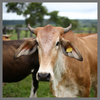
Beef production systems rely on efficient cow-calf operations, that is, farms where the cow herd has a high level of fertility and pregnancies are common. Bull fertility also plays an important role in terms of pregnancy rates.
Read more
-

Sep
15
Interpretive Summary: Genetic architecture of a composite beef cattle population
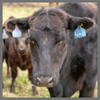
Composite breeds are commonly used in the U.S. beef industry since they provide producers with benefits such as breed complementarity and retained heterosis. However, cattle composite genomes are not well characterized.
Read more
-

Sep
15
Interpretive Summary: Correcting for base-population differences and unknown parent groups in single-step genomic predictions of Norwegian Red cattle
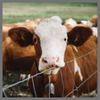
Our study dealt with strategies on how to reduce biases (inflation and level-bias) and improve a parameter related to accuracy (stability) of genomic predictions of breeding values that combine genotyped and non-genotyped animals, which are denoted as single-step genomic predictions.
Read more
-

Sep
15
Interpretive Summary: Feeding a high-energy finishing diet upon arrival to high-risk feedlot calves: effects on health, performance, ruminal pH, rumination, serum metabolites, and carcass traits
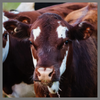
When high-risk cattle arrive at the feedlot, they have low feed consumption and a greater risk for disease because of stress, inflammation, and exposure to pathogens. Because of reduced feed consumption, newly arrived cattle may not be able to meet their energy requirement for growth during the first several weeks after feedlot arrival.
Read more
-

Sep
15
Interpretive Summary: Precision feeding of lactating sows: implementation and evaluation of a decision support system in farm conditions
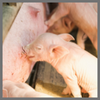
In lactating sows, nutrient requirements among individual animals vary greatly. With a single diet, lactating sows are likely to be either underfed, which results in body reserve mobilization, or overfed, which results in nutrient excretion.
Read more
-

Sep
08
Interpretive Summary: A preliminary exploration of the impact of experiential learning on animal science undergraduates’ perceptions of humane stunning and slaughter
.png?sfvrsn=1cf852d1_0)
It is essential to educate students about humane slaughter as it is a critical component of livestock production, particularly for animal science students who represent future stakeholders in agriculture. There is limited research about the effects of experiential learning on student comfort in participating in education regarding sensitive, yet important topics in the animal sciences.
Read more
-

Sep
08
Interpretive Summary: Frequency of maternal supplementation of energy and protein during late gestation modulates preweaning growth of their beef offspring
.png?sfvrsn=b2ff52d1_0)
Decreasing the frequency of protein and energy supplementation to beef cattle is often used to reduce labor and feeding costs. We hypothesized that reducing the frequency of protein and energy during third trimester of gestation of beef cows would not impact maternal performance but would be detrimental to offspring growth.
Read more
-

Sep
08
Interpretive Summary: Effects of adding potassium bicarbonate to diets with high or low crystalline lysine to influence dietary cation–anion difference on finishing pig growth performance
.png?sfvrsn=dbf852d1_0)
Potassium, fed as potassium bicarbonate (KHCO3) in this study, is essential for swine and is a key component of numerous physiological processes such as the maintenance of electrolyte balance, neuromuscular function. Feeding high levels of chloride anions, via crystalline lysine (L-Lys HCl) has been shown to negatively impact intake and growth performance of pigs.
Read more
-

Sep
08
Interpretive Summary: Effects of a Saccharomyces cerevisiae fermentation product-supplemented diet on circulating immune cells and oxidative stress markers of dogs
.png?sfvrsn=d6fe52d1_0)
Saccharomyces cerevisiae fermentation product (SCFP) is a yeast product containing bioactive fermentation metabolites, residual yeast cells, and yeast cell wall fragments. In this study, SCFP was investigated for its impacts on immune health, oxidative stress, and skin and hair coat health in dogs.
Read more
-

Sep
08
Interpretive Summary: Infographic: Effects of a Saccharomyces cerevisiae fermentation product-supplemented diet on circulating immune cells and oxidative stress markers in dogs
.png?sfvrsn=b1fe52d1_0)
The American Society of Animal Science and the Editors of the Journal of Animal Science invite you to have a look at the latest infographic and paper which explores how a fermentation product included in the diet of dogs may impact immune cells, oxidative stress/inflammation and skin and coat health.
Read more
-

Sep
01
USDA investing $197 million in conservation

The United States Department of Agriculture (USDA) has announced through the Regional Conservation Partnership Program, that it will be awarding $197 million for 41 locally-led conservation projects. The Regional Conservation Partnership Program (RCPP) leverages partner resources to advance innovative projects that address climate change, enhance water quality, and address other critical challenges on agricultural land.
Read more
-

Sep
01
The Inflation Reduction Act voted on by House

The House recently passed the Inflation Reduction Act, sending the legislation to the desk of President Joe Biden. The Act aims to lower healthcare costs, combat climate change, raise taxes on some large companies, and reduce the deficit.
Read more
-

Sep
01
Massachusetts delays rule banning the sale of some pork
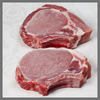
A federal judge in Massachusetts has agreed to delay the enforcement of Question 3, the state law that would ban the sale of pork that comes from animals not housed according to the state’s housing standards. Massachusetts’s Question 3 requirements are like those in California’s Proposition 12, which has been challenged in a case that will be heard by the Supreme Court this term, National Pork Producers Council v. Ross.
Read more
-

Sep
01
Homeland Security pursues support for agriculture defense

The United States Department of Homeland Security (DHS) Science and Technology Directorate (S&T) has released a request for information regarding capabilities for science support for the S&T Food, Agriculture, and Veterinary Defense Program (FAV-D). DHS recently established the Office of Health Security to refocus department efforts on human and agriculture security.
Read more
-

Sep
01
Gus Schumacher Nutrition Incentive Program receives USDA support

The Gus Schumacher Nutrition Incentive Program (GusNIP) brings together stakeholders from various parts of the food and healthcare systems. The United States Department of Agriculture (USDA) has announced almost $8 million to GusNIP’s Produce Prescription Project, as part of the American Rescue Plan to be administered by the USDA’s National Institute of Food and Agriculture (NIFA).
Read more
-

Sep
01
Food prices decline in July 2022

The Food and Agriculture Organization of the United Nations (FAO) has released the FAO Food Price Index (FFPI) for July 2022. The FFPI is a measure of the monthly change in international prices of a basket of food commodities.
Read more
 SepInterpretive Summary: Copy number variation of ZNF280BY across eight sheep breeds and its association with testicular size of Hu sheep
SepInterpretive Summary: Copy number variation of ZNF280BY across eight sheep breeds and its association with testicular size of Hu sheep.png?sfvrsn=c0f152d1_0) The zinc finger protein 280B-like, Y-linked ZNF280BY is a bovid-specific Y chromosome gene, playing important roles in testicular development and male fertility. In this study, we found that the ovine ZNF280BY was highly expressed in the testis and significantly upregulated during testicular development.
The zinc finger protein 280B-like, Y-linked ZNF280BY is a bovid-specific Y chromosome gene, playing important roles in testicular development and male fertility. In this study, we found that the ovine ZNF280BY was highly expressed in the testis and significantly upregulated during testicular development. SepInterpretive Summary: The effects of heat stress on milk production and the grazing behavior of dairy Holstein cows milked by an automatic milking system
SepInterpretive Summary: The effects of heat stress on milk production and the grazing behavior of dairy Holstein cows milked by an automatic milking system.png?sfvrsn=9cf152d1_0) In higher temperature conditions, dairy cows under pasture-based automatic milking systems may experience heat stress, affecting their health and productive performance. In the present study, the relationships between heat stress, measured by the temperature–humidity index (THI), productive traits, and grazing behaviors were evaluated.
In higher temperature conditions, dairy cows under pasture-based automatic milking systems may experience heat stress, affecting their health and productive performance. In the present study, the relationships between heat stress, measured by the temperature–humidity index (THI), productive traits, and grazing behaviors were evaluated. SepInterpretive Summary: How copper can impact pig growth: comparing the effect of copper sulfate and monovalent copper oxide on oxidative status, inflammation, gene abundance, and microbial modulation as potential mechanisms of action
SepInterpretive Summary: How copper can impact pig growth: comparing the effect of copper sulfate and monovalent copper oxide on oxidative status, inflammation, gene abundance, and microbial modulation as potential mechanisms of action.png?sfvrsn=86f152d1_0) Copper is a nonrenewable mineral resource that is essential for all biological organisms. After banning the antibiotics, copper has received considerable attention due to its antimicrobial properties that improve performance in animals when fed over the minimum requirement.
Copper is a nonrenewable mineral resource that is essential for all biological organisms. After banning the antibiotics, copper has received considerable attention due to its antimicrobial properties that improve performance in animals when fed over the minimum requirement. SepInterpretive Summary: Acute stress deteriorates breast meat quality of Ross 308 broiler chickens by inducing redox imbalance and mitochondrial dysfunction
SepInterpretive Summary: Acute stress deteriorates breast meat quality of Ross 308 broiler chickens by inducing redox imbalance and mitochondrial dysfunction Preslaughter acute stress can cause physiological and metabolic disorders of broilers and lead to deterioration of meat quality and high incidence of pale, soft, and exudative (PSE)-like meat, which block the development of broiler industry. Acute stress-induced imbalance of redox status and insufficient energy supply are important reasons for meat quality reduction.
Preslaughter acute stress can cause physiological and metabolic disorders of broilers and lead to deterioration of meat quality and high incidence of pale, soft, and exudative (PSE)-like meat, which block the development of broiler industry. Acute stress-induced imbalance of redox status and insufficient energy supply are important reasons for meat quality reduction. SepInterpretive Summary: Weak genotype x environment interaction suggests that measuring scrotal circumference at 12 and 18 mo of age is helpful to select precocious Brahman cattle
SepInterpretive Summary: Weak genotype x environment interaction suggests that measuring scrotal circumference at 12 and 18 mo of age is helpful to select precocious Brahman cattle Beef production systems rely on efficient cow-calf operations, that is, farms where the cow herd has a high level of fertility and pregnancies are common. Bull fertility also plays an important role in terms of pregnancy rates.
Beef production systems rely on efficient cow-calf operations, that is, farms where the cow herd has a high level of fertility and pregnancies are common. Bull fertility also plays an important role in terms of pregnancy rates. SepInterpretive Summary: Genetic architecture of a composite beef cattle population
SepInterpretive Summary: Genetic architecture of a composite beef cattle population Composite breeds are commonly used in the U.S. beef industry since they provide producers with benefits such as breed complementarity and retained heterosis. However, cattle composite genomes are not well characterized.
Composite breeds are commonly used in the U.S. beef industry since they provide producers with benefits such as breed complementarity and retained heterosis. However, cattle composite genomes are not well characterized. SepInterpretive Summary: Correcting for base-population differences and unknown parent groups in single-step genomic predictions of Norwegian Red cattle
SepInterpretive Summary: Correcting for base-population differences and unknown parent groups in single-step genomic predictions of Norwegian Red cattle Our study dealt with strategies on how to reduce biases (inflation and level-bias) and improve a parameter related to accuracy (stability) of genomic predictions of breeding values that combine genotyped and non-genotyped animals, which are denoted as single-step genomic predictions.
Our study dealt with strategies on how to reduce biases (inflation and level-bias) and improve a parameter related to accuracy (stability) of genomic predictions of breeding values that combine genotyped and non-genotyped animals, which are denoted as single-step genomic predictions. SepInterpretive Summary: Feeding a high-energy finishing diet upon arrival to high-risk feedlot calves: effects on health, performance, ruminal pH, rumination, serum metabolites, and carcass traits
SepInterpretive Summary: Feeding a high-energy finishing diet upon arrival to high-risk feedlot calves: effects on health, performance, ruminal pH, rumination, serum metabolites, and carcass traits When high-risk cattle arrive at the feedlot, they have low feed consumption and a greater risk for disease because of stress, inflammation, and exposure to pathogens. Because of reduced feed consumption, newly arrived cattle may not be able to meet their energy requirement for growth during the first several weeks after feedlot arrival.
When high-risk cattle arrive at the feedlot, they have low feed consumption and a greater risk for disease because of stress, inflammation, and exposure to pathogens. Because of reduced feed consumption, newly arrived cattle may not be able to meet their energy requirement for growth during the first several weeks after feedlot arrival. SepInterpretive Summary: Precision feeding of lactating sows: implementation and evaluation of a decision support system in farm conditions
SepInterpretive Summary: Precision feeding of lactating sows: implementation and evaluation of a decision support system in farm conditions In lactating sows, nutrient requirements among individual animals vary greatly. With a single diet, lactating sows are likely to be either underfed, which results in body reserve mobilization, or overfed, which results in nutrient excretion.
In lactating sows, nutrient requirements among individual animals vary greatly. With a single diet, lactating sows are likely to be either underfed, which results in body reserve mobilization, or overfed, which results in nutrient excretion. SepInterpretive Summary: A preliminary exploration of the impact of experiential learning on animal science undergraduates’ perceptions of humane stunning and slaughter
SepInterpretive Summary: A preliminary exploration of the impact of experiential learning on animal science undergraduates’ perceptions of humane stunning and slaughter.png?sfvrsn=1cf852d1_0) It is essential to educate students about humane slaughter as it is a critical component of livestock production, particularly for animal science students who represent future stakeholders in agriculture. There is limited research about the effects of experiential learning on student comfort in participating in education regarding sensitive, yet important topics in the animal sciences.
It is essential to educate students about humane slaughter as it is a critical component of livestock production, particularly for animal science students who represent future stakeholders in agriculture. There is limited research about the effects of experiential learning on student comfort in participating in education regarding sensitive, yet important topics in the animal sciences. SepInterpretive Summary: Frequency of maternal supplementation of energy and protein during late gestation modulates preweaning growth of their beef offspring
SepInterpretive Summary: Frequency of maternal supplementation of energy and protein during late gestation modulates preweaning growth of their beef offspring.png?sfvrsn=b2ff52d1_0) Decreasing the frequency of protein and energy supplementation to beef cattle is often used to reduce labor and feeding costs. We hypothesized that reducing the frequency of protein and energy during third trimester of gestation of beef cows would not impact maternal performance but would be detrimental to offspring growth.
Decreasing the frequency of protein and energy supplementation to beef cattle is often used to reduce labor and feeding costs. We hypothesized that reducing the frequency of protein and energy during third trimester of gestation of beef cows would not impact maternal performance but would be detrimental to offspring growth. SepInterpretive Summary: Effects of adding potassium bicarbonate to diets with high or low crystalline lysine to influence dietary cation–anion difference on finishing pig growth performance
SepInterpretive Summary: Effects of adding potassium bicarbonate to diets with high or low crystalline lysine to influence dietary cation–anion difference on finishing pig growth performance.png?sfvrsn=dbf852d1_0) Potassium, fed as potassium bicarbonate (KHCO3) in this study, is essential for swine and is a key component of numerous physiological processes such as the maintenance of electrolyte balance, neuromuscular function. Feeding high levels of chloride anions, via crystalline lysine (L-Lys HCl) has been shown to negatively impact intake and growth performance of pigs.
Potassium, fed as potassium bicarbonate (KHCO3) in this study, is essential for swine and is a key component of numerous physiological processes such as the maintenance of electrolyte balance, neuromuscular function. Feeding high levels of chloride anions, via crystalline lysine (L-Lys HCl) has been shown to negatively impact intake and growth performance of pigs. SepInterpretive Summary: Effects of a Saccharomyces cerevisiae fermentation product-supplemented diet on circulating immune cells and oxidative stress markers of dogs
SepInterpretive Summary: Effects of a Saccharomyces cerevisiae fermentation product-supplemented diet on circulating immune cells and oxidative stress markers of dogs.png?sfvrsn=d6fe52d1_0) Saccharomyces cerevisiae fermentation product (SCFP) is a yeast product containing bioactive fermentation metabolites, residual yeast cells, and yeast cell wall fragments. In this study, SCFP was investigated for its impacts on immune health, oxidative stress, and skin and hair coat health in dogs.
Saccharomyces cerevisiae fermentation product (SCFP) is a yeast product containing bioactive fermentation metabolites, residual yeast cells, and yeast cell wall fragments. In this study, SCFP was investigated for its impacts on immune health, oxidative stress, and skin and hair coat health in dogs. SepInterpretive Summary: Infographic: Effects of a Saccharomyces cerevisiae fermentation product-supplemented diet on circulating immune cells and oxidative stress markers in dogs
SepInterpretive Summary: Infographic: Effects of a Saccharomyces cerevisiae fermentation product-supplemented diet on circulating immune cells and oxidative stress markers in dogs.png?sfvrsn=b1fe52d1_0) The American Society of Animal Science and the Editors of the Journal of Animal Science invite you to have a look at the latest infographic and paper which explores how a fermentation product included in the diet of dogs may impact immune cells, oxidative stress/inflammation and skin and coat health.
The American Society of Animal Science and the Editors of the Journal of Animal Science invite you to have a look at the latest infographic and paper which explores how a fermentation product included in the diet of dogs may impact immune cells, oxidative stress/inflammation and skin and coat health. SepUSDA investing $197 million in conservation
SepUSDA investing $197 million in conservation The United States Department of Agriculture (USDA) has announced through the Regional Conservation Partnership Program, that it will be awarding $197 million for 41 locally-led conservation projects. The Regional Conservation Partnership Program (RCPP) leverages partner resources to advance innovative projects that address climate change, enhance water quality, and address other critical challenges on agricultural land.
The United States Department of Agriculture (USDA) has announced through the Regional Conservation Partnership Program, that it will be awarding $197 million for 41 locally-led conservation projects. The Regional Conservation Partnership Program (RCPP) leverages partner resources to advance innovative projects that address climate change, enhance water quality, and address other critical challenges on agricultural land. SepThe Inflation Reduction Act voted on by House
SepThe Inflation Reduction Act voted on by House The House recently passed the Inflation Reduction Act, sending the legislation to the desk of President Joe Biden. The Act aims to lower healthcare costs, combat climate change, raise taxes on some large companies, and reduce the deficit.
The House recently passed the Inflation Reduction Act, sending the legislation to the desk of President Joe Biden. The Act aims to lower healthcare costs, combat climate change, raise taxes on some large companies, and reduce the deficit. SepMassachusetts delays rule banning the sale of some pork
SepMassachusetts delays rule banning the sale of some pork A federal judge in Massachusetts has agreed to delay the enforcement of Question 3, the state law that would ban the sale of pork that comes from animals not housed according to the state’s housing standards. Massachusetts’s Question 3 requirements are like those in California’s Proposition 12, which has been challenged in a case that will be heard by the Supreme Court this term, National Pork Producers Council v. Ross.
A federal judge in Massachusetts has agreed to delay the enforcement of Question 3, the state law that would ban the sale of pork that comes from animals not housed according to the state’s housing standards. Massachusetts’s Question 3 requirements are like those in California’s Proposition 12, which has been challenged in a case that will be heard by the Supreme Court this term, National Pork Producers Council v. Ross. SepHomeland Security pursues support for agriculture defense
SepHomeland Security pursues support for agriculture defense The United States Department of Homeland Security (DHS) Science and Technology Directorate (S&T) has released a request for information regarding capabilities for science support for the S&T Food, Agriculture, and Veterinary Defense Program (FAV-D). DHS recently established the Office of Health Security to refocus department efforts on human and agriculture security.
The United States Department of Homeland Security (DHS) Science and Technology Directorate (S&T) has released a request for information regarding capabilities for science support for the S&T Food, Agriculture, and Veterinary Defense Program (FAV-D). DHS recently established the Office of Health Security to refocus department efforts on human and agriculture security. SepGus Schumacher Nutrition Incentive Program receives USDA support
SepGus Schumacher Nutrition Incentive Program receives USDA support The Gus Schumacher Nutrition Incentive Program (GusNIP) brings together stakeholders from various parts of the food and healthcare systems. The United States Department of Agriculture (USDA) has announced almost $8 million to GusNIP’s Produce Prescription Project, as part of the American Rescue Plan to be administered by the USDA’s National Institute of Food and Agriculture (NIFA).
The Gus Schumacher Nutrition Incentive Program (GusNIP) brings together stakeholders from various parts of the food and healthcare systems. The United States Department of Agriculture (USDA) has announced almost $8 million to GusNIP’s Produce Prescription Project, as part of the American Rescue Plan to be administered by the USDA’s National Institute of Food and Agriculture (NIFA). SepFood prices decline in July 2022
SepFood prices decline in July 2022 The Food and Agriculture Organization of the United Nations (FAO) has released the FAO Food Price Index (FFPI) for July 2022. The FFPI is a measure of the monthly change in international prices of a basket of food commodities.
The Food and Agriculture Organization of the United Nations (FAO) has released the FAO Food Price Index (FFPI) for July 2022. The FFPI is a measure of the monthly change in international prices of a basket of food commodities.



